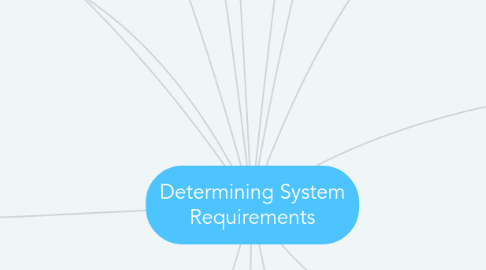
1. Traditional Methods for Determining Requirements
1.1. Interviewing individuals
1.2. Interviewing groups
1.3. Observing workers
1.4. Studying business documents
2. Contemporary Methods for Determining System Requirements
2.1. Joint Application Design (JAD)
2.2. CASE tools
2.3. System prototypes
3. JAD Participants:
3.1. Session Leader
3.2. Users
3.3. Managers
3.4. Sponsor
3.5. Systems Analysts
3.6. Scribe
3.7. IS Staff
4. CASE Tools During JAD
4.1. Diagramming and form-building CASE tools are used
4.2. Enables analysts to enter system models directly into CASE during the JAD session
4.3. Screen designs and prototyping can be done during JAD and shown to users
5. Using Prototyping During Requirements Determination
5.1. Prototyping – an iterative process of systems development in which requirements are converted to a working system that is continually revised through close collaboration between an analyst and users.
5.2. Quickly converts requirements to working version of system
5.3. Once the user sees requirements converted to system, will ask for modifications or will generate additional requests
6. Radical Methods for Determining System Requirements
6.1. Business Process Reengineering (BPR): search for and implementation of radical change in business processes to achieve breakthrough improvements in products and services
7. Radical Methods for Determining System Requirements
7.1. Business Process Reengineering (BPR): search for and implementation of radical change in business processes to achieve breakthrough improvements in products and services
8. BPR Goals
8.1. Reorganize complete flow of data in major sections of an organization.
8.2. Eliminate unnecessary steps.
8.3. Achieve synergy between steps.
8.4. Become more responsive to future change.
9. The Process of Determining Requirements
9.1. Good Systems Analyst Characteristics:
9.1.1. Impertinence—question everything
9.1.2. Impartiality—consider all issues to find the best organizational solution
9.1.3. Relax constraints—assume anything is possible
9.1.4. Attention to details—every fact must fit
9.1.5. Reframing—challenge yourself to new ways
10. Deliverables and Outcomes
10.1. Deliverables for Requirements Determination:
10.1.1. From interviews and observations
10.1.2. From existing written documents
10.1.3. From computerized sources
11. Identifying Processes to Reengineer
11.1. Key business processes
11.1.1. Structured, measured set of activities designed to produce specific output for a particular customer or market
11.1.2. Focused on customers and outcome
11.1.3. Same techniques as requirements determination are used
11.2. Which activities need radical change?
11.2.1. Importance of activity
11.2.2. Feasibility of change
11.2.3. Level of dysfunction of current activity
12. Disruptive Technologies
12.1. Information technologies must be applied to radically improve business processes.
12.2. Disruptive technologies are technologies that enable the breaking of long-held business rules that inhibit organizations from making radical business changes.
13. Requirements Determination using Agile Methodologies
13.1. Requirements Determination using Agile Methodologies
13.1.1. Replace traditional SDLC waterfall with iterative analyze–design–code–test cycle
13.2. Agile usage-centered design
13.2.1. Focuses on user goals, roles, and tasks
13.3. The Planning Game
13.3.1. Based on eXtreme programming
13.3.2. Exploration, steering, commitment
14. Electronic Commerce Applications: Determining System Requirements
14.1. Determining system requirements for Pine Valley furniture’s WebStore
14.1.1. System layout and navigation characteristics
14.1.2. WebStore and site management system capabilities
14.1.3. Customer and inventory information
14.1.4. System prototype evolution
